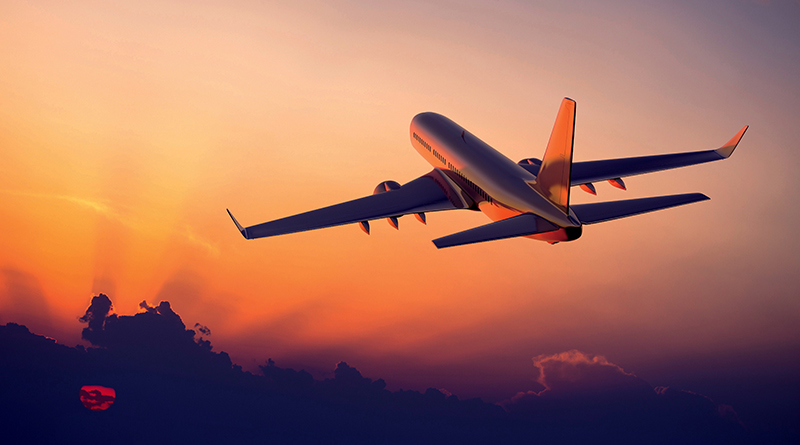
Tips on Air Travel for Families with Autistic Members
By Peter Bochner
While traveling by plane can provoke anxiety for even seasoned air travelers, for people with autism who are fearful of new things, it can be terrifying. In fact, according to foxnews.com in an article titled “Flying with Autism: What You Need to Know”, many families that have children or adult family members who are autistic don’t travel anywhere because the process is so nerve-wracking, or else because they fear that a situation can unravel quickly.
Those fears are well-founded. In May of this year, Donna Beegle and her autistic daughter Juliette, 15, made headlines after they were kicked off a United flight headed to Portland, Ore. because the pilot did not “feel comfortable” with her on board after a disturbance in the cabin. While certain safety rules apply, passengers with disabilities, including autism, cannot be denied travel under the Air Carrier Access Act, which prohibits discrimination on the basis of disability. On its website, the U.S. Department of Transportation provides a rundown of the rights of all disabled passengers –whether they are unable to walk or stand, have metal implants, require special medication or intellectual disabilities like autism –and the obligations of airlines.
Traveling with an autistic child or guardian requires preparation and planning. Fortunately, there are many free trip planning checklists and resources for autistic family members.
Most airlines have a clearly stated policy on their websites for disabled passengers, but services among the various airlines differ. And although airline agents are trained to help passengers with a variety of disabilities, most airlines suggest it’s a good idea to call a reservation specialist ahead of time, let them know your family member has special needs, and request any special services needed ahead of time. Ask whether any accommodations are available, like bulk-head or pre-boarding seating.
In addition, a growing number of major airports have rehearsal programs to help autistic passengers navigate potentially stressful travel procedures, like searches at security checkpoints. In conjunction with groups such as The Arc, a national community-based organization advocating for people with intellectual and developmental disabilities and their families, programs like Wings for Autism provide families with the opportunity to practice entering the airport, obtain boarding passes, go through security and board a plane.
The Wings for Autism program provides people with intellectual and developmental disabilities and their families with the opportunity to rehearse for the experience of flying. The program was started years ago at Boston’s Logan International Airport by a chapter of Arc in Massachusetts, and has since spread to other chapters in other states.
A family going through the Wings for Autism program will experience getting boarding passes, going through security, waiting for a flight at a gate, boarding and even spending time aboard a plane sitting on the runway. By rehearsing for a flight ahead of time, families can see what some of the potential stumbling blocks are, whether it’s waiting in a long line for tickets or being in close proximity to so many people. Of particular concern is the security checkpoint, because many of the behaviors of an autistic adult or child, such as diverting the eyes, avoiding touch, and repeating phrases they hear, can be misinterpreted by a security agent.
(Despite a child’s disabilities, they cannot skip security. Transportation Security Administration airport personnel are trained to deal with autistic passengers — what they look like, and how to recognize and respond to families. Most are understanding, especially if they know ahead of time that someone is autistic.)
In a recent article on the expansion of the Wings for Autism program to Milwaukee, Emily Levine, executive director of the Autism Society of Southeastern Wisconsin, was quoted saying, “We hope that it will broaden their world, give them more opportunities, more experiences.”
Here is a partial checklist for families flying with a family member with autism or another disability.
- Have proper identification. Air travel regulations require that adult passengers, age 18 and over, show a U.S. federal or state-issued ID — such as a driver’s license, state ID card, or U.S. passport –that contains name, date of birth, gender and expiration date, in order to be allowed through the checkpoint and onto flights.
- Pack games, books, toys or DVDs in your carry-on. If your child is sensitive to loud sounds, bring noise-cancelling headphones. Pack a change of clothes in case of spills.
- When booking air travel, allow more than enough time between connecting flights to navigate unfamiliar terminals and clear customs smoothly.
- Plan for delays. Managing a one-hour delay is different than a multiple-hour delay or a complete cancellation. Prepare your child traveling for what’s ahead, and have emergency contacts, numbers for local doctors and cash on hand, just in case.
- No matter what, be polite and remain calm. Those with autism pick up on the stress of their caregiver.
This blog was based in part on an article by Fox News, which can be read here.
Peter Bochner is a writer and editor for subjects related to information technology and medicine. He has worked on such publications as Computerworld, Asian Sources and the Journal of Alzheimers Disease, served as editor for several TechTarget websites, and has written for several high-tech research firms. In addition, he served as editor for the recently published book Aspertools: The Practical Guide for Understanding and Embracing Asperger’s, Autism Spectrum Disorder and Neurodiversity, by Harold S. Reitman, M.D.




